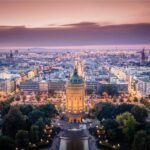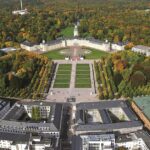Wiesbaden, the state capital of Hesse, is a spa town with mineral springs that date back to the Roman era. The city exudes the opulent design and refined atmosphere of a 19th-century resort. Elegant structures like the glass-domed Kurhaus (Spa House), charming gardens and vintage transport options like the 1888 funicular railway still use water ballast to ascend and descend the Neroberg hill.
1. St Elizabeth’s Church
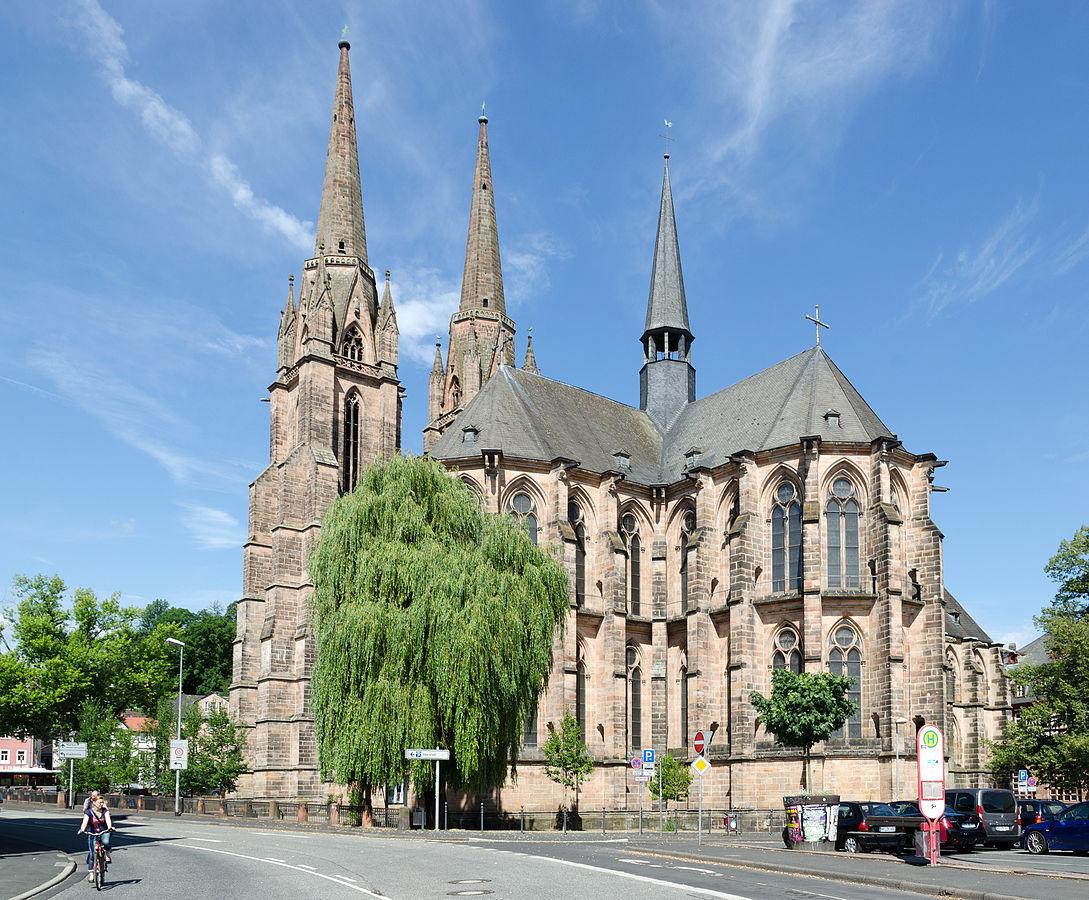
Image Source: https://religiana.com/sites/default/files/styles/hero_image/public/images/2020-05/2163.jpg?itok=GuCCrSJE
An 1855-completed Russian Orthodox church may be seen on Neroberg as well. Duke Adolf of Nassau erected this as a tribute to his Russian wife, Grand Duchess Elizabeth Mikhailovna, who passed away during delivery. Adolf commissioned Philipp Hoffmann, who had specifically studied Orthodox architecture for the job, to create the blueprints for the church that he constructed around her burial. His wife’s patron saint, Elizabeth, is honoured at the church.
2. Marktkirche

The striking Neo-Gothic church’s main tower rises over 100 metres above Wiesbaden’s main Schlossplatz. To accommodate a population that had quadrupled during the preceding 20 years, it needed to be large. You can’t miss the five life-size sculptures in the chancel.
3. Nerobergbahn

Image Source: https://stories.vrm.de/wp-content/uploads/2019/10/IMG_0318.jpg
One of the few funicular railroads in the world still employing water ballast as a driving mechanism is the train that shuttles to the top of the Neroberg to the north of Wiesbaden. A steel rope pulls the upward-bound car to the top of the hill as the train that is heavier than the one at the foot of the hill descends the slope thanks to the addition of water.
4. Neroberg
![Neroberg, Wiesbaden - [GEO]](https://image.geo.de/30133984/t/Ly/v4/w1440/r0/-/04-neroberg-f-115902146-jpg--76096-.jpg)
Image Source: https://image.geo.de/30133984/t/Ly/v4/w1440/r0/-/04-neroberg-f-115902146-jpg–76096-.jpg
As soon as you reach the summit of this 245-meter hill, you’ll understand why you travelled there since you’ll get a stunning view over the Rhine Valley all the way to Mainz, which is located to the south. The main attraction is a classical Monopteros temple, from which you can get the greatest view of Wiesbaden. In 1989, a hotel that had been erected atop the hill caught fire, leaving just a lone tower that is now a restaurant.
5. Kochbrunnen

Image Source: https://a.travel-assets.com/findyours-php/viewfinder/images/res70/261000/261723-Kochbrunnen.jpg
The Kochbrunnen (Cooking Fountain), which erupts on its eponymous plaza at 66°C, is Wiesbaden’s most well-known and hottest spring. On the square, there is a drinking water fountain that is housed in a Neo-Baroque pavilion. The spring, whose existence was first documented in the 14th century, draws water from a depth of 2,000 metres, filters it in a processing facility, and then channels it here.
6. Museum Wiesbaden
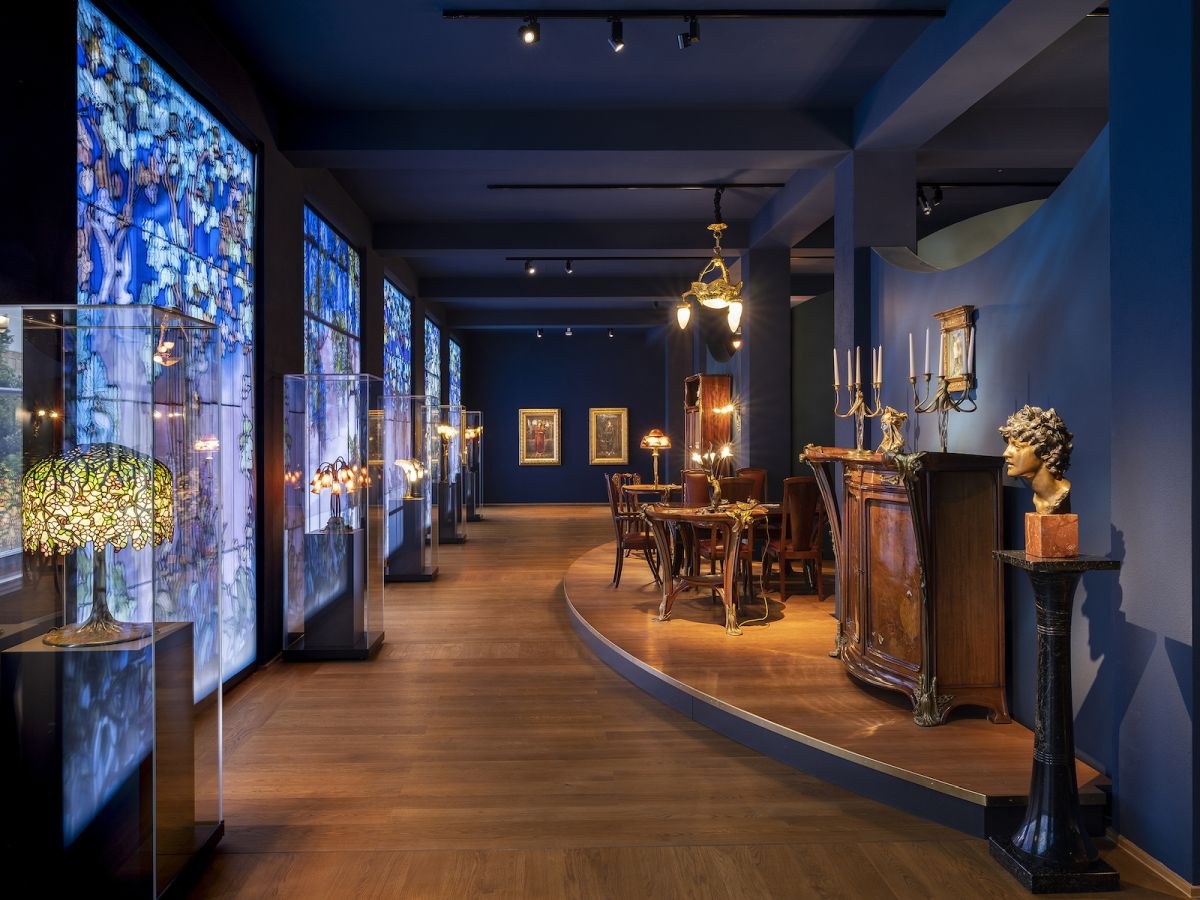
Image Source: https://www.kultur-in-hessen.de/thumbs/orte/museum-wiesbaden/jugendstil_ausstellung_2019_48_bernd_fickert_300dpi-1200×900.jpg
The Museum Wiesbaden’s three-winged structure was constructed in the early 1910s, but its collection dates back at least a century earlier to the holdings of Johann Isaak von Gerning, a contemporary of Goethe and a writer. The three parts include a natural history wing brimming with zoological specimens and fossils, a natural history museum renowned for its 19th and 20th century paintings, and a collection of artefacts assembled by the House of Nassau.
7. Kurhaus
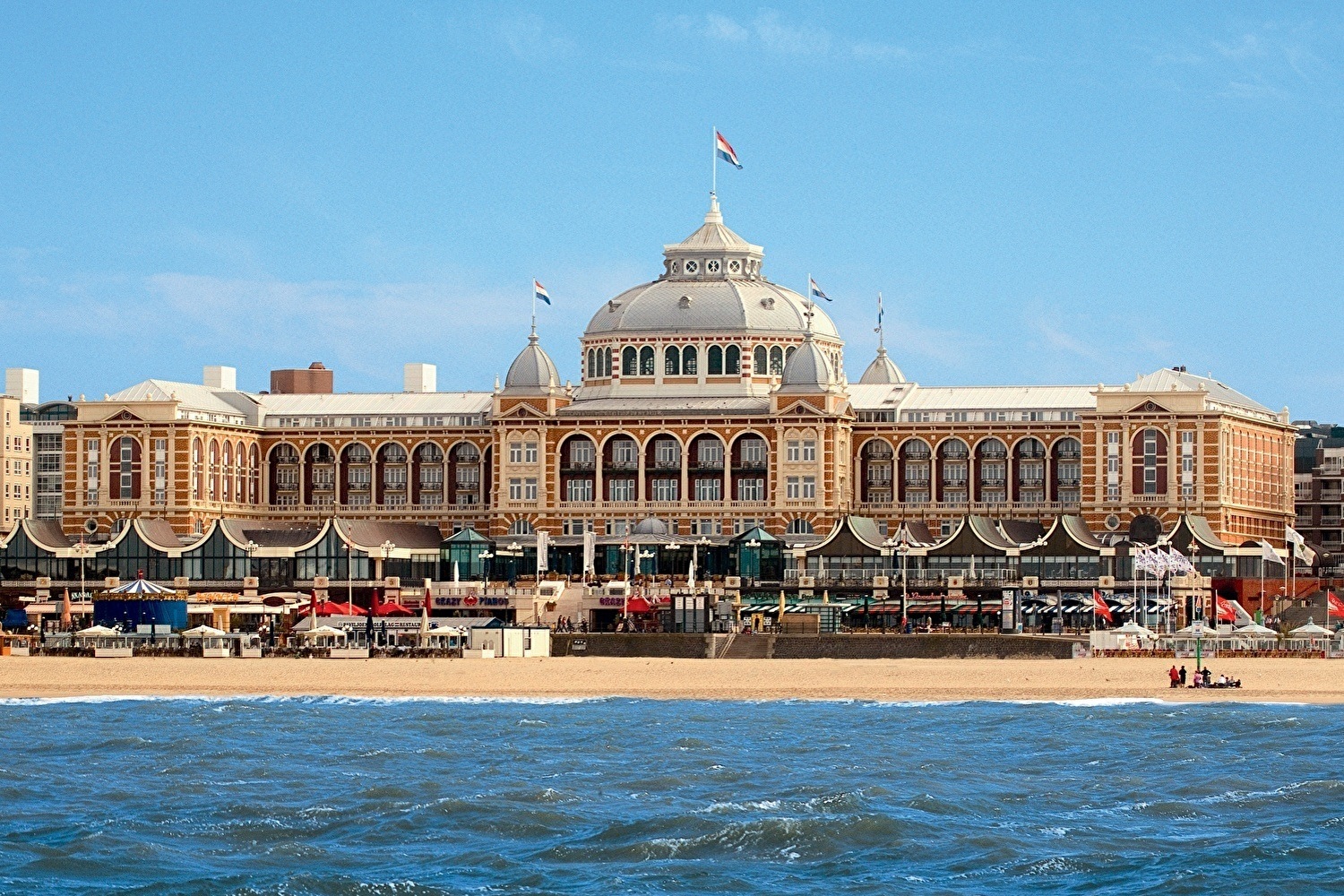
Image Source: https://www.amrathkurhaus.com/upload/heading/home-1500x1000_10.jpg
The structure’s lavish ballrooms serve as a location for high-profile events, Wiesbaden’s high-stakes casino, and an upscale restaurant, among other uses. You can typically enter the foyer to take pictures of the dome, the stained glass above the door, and the statues and frescoes of Greek gods.
8. Biebrich Palace
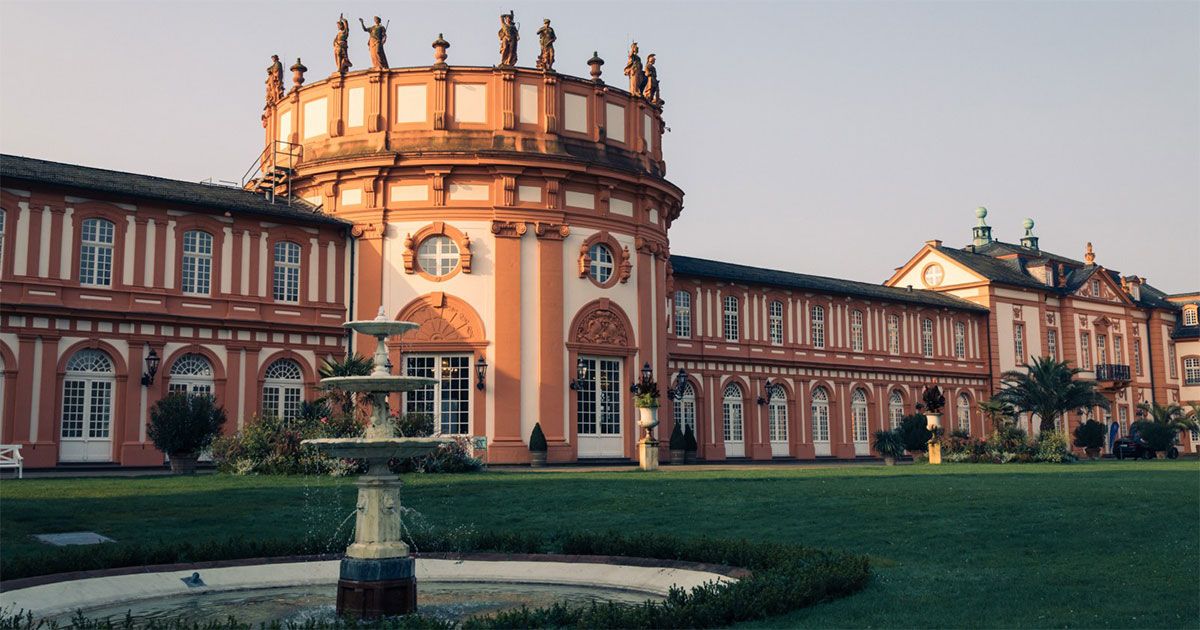
Biebrich Palace, a Baroque home built at the beginning of the 18th century, is one of the most stunning buildings on the Rhine. George August, Count of Nassau-Idstein, ordered the construction of the palace, and following his passing, the Nassau-Ussingen dynasty acquired ownership of it. The Hessian state government now uses the structure for meetings and festivities.
9. Kurpark
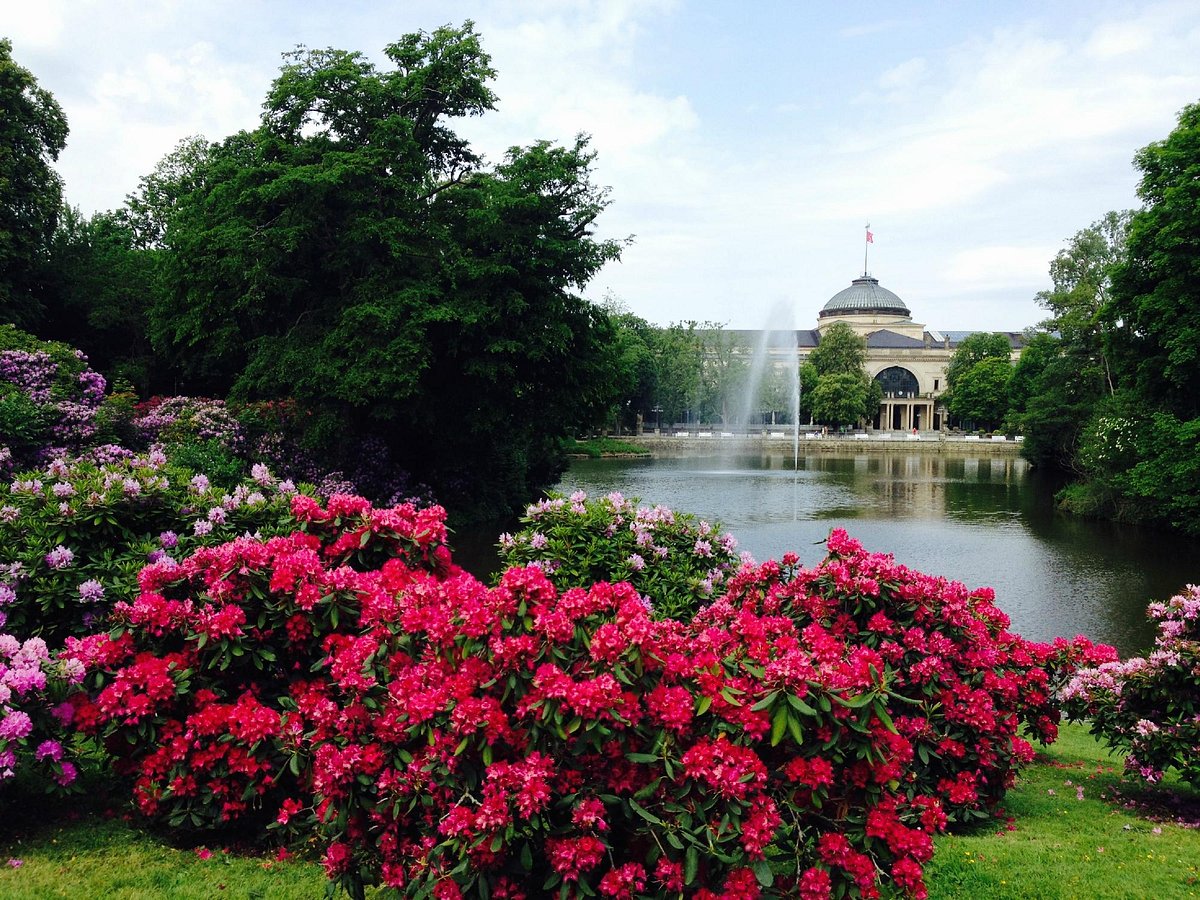
Image Source: https://dynamic-media-cdn.tripadvisor.com/media/photo-o/08/85/ab/44/kurpark.jpg?w=1200&h=-1&s=1
The 1852-created English-style Kurpark is located on the east side of the Kurhaus. The Kurpark Weiher, an ornamental lake with a fountain that shoots a water jet six metres into the air, located just in front of the Kurhaus. On the west coast of the lake, there are benches, café terraces, and an outdoor stage near the water. Boat rentals are also available.
10. Wiesbaden City Palace
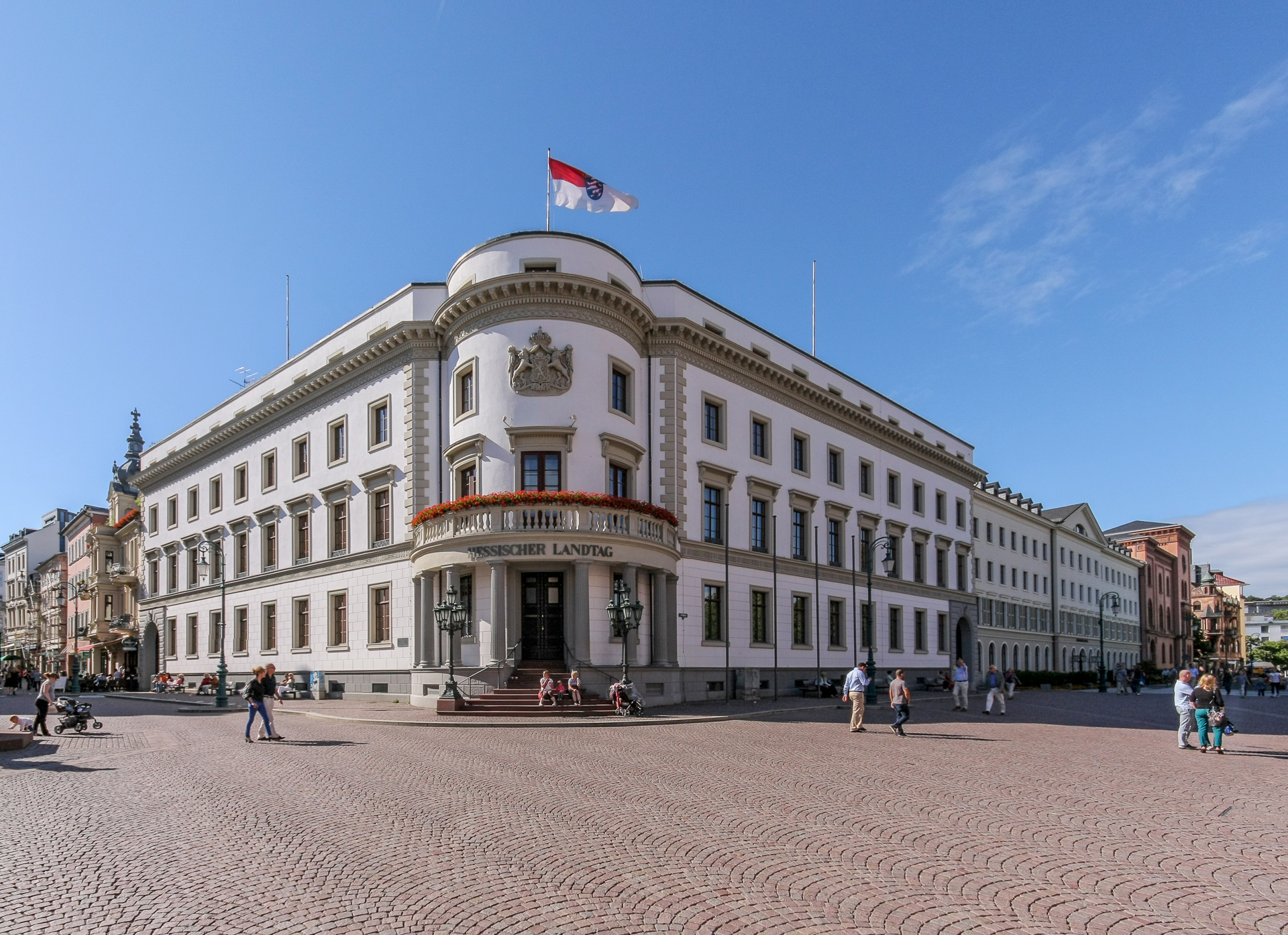
Image Source: https://upload.wikimedia.org/wikipedia/commons/b/b3/Stadtschloss_Wiesbaden.jpg
William, Duke of Nassau relocated his mansion to Marktplatz in the heart of the city in an effort to demonstrate his sympathy for Wiesenbad’s residents and establish a connection with his forebears. The landmark, which houses the Hessian State Parliament, is a sight to see from the outside and contributes to the well-kept ensemble on Marktplatz.
11. Taunusstraße

Taunusstraße is a regal street of 19th-century villas in the Historicist style, running diagonally and finishing shortly after Kochbrunnenplatz. The Antiquitätenmeile (or “Antiques Mile”) on Taunusstraße is still noted for its strengths in antiques. The Boulevard truly extends the red carpet to walkers on the last weekend of August when it is closed to vehicular traffic.
12. Kaiser-Friedrich-Therme
image Source: https://mein.toubiz.de/api/v1/article/b90640a8-08d7-4137-b5ec-a906e585efbc/mainImage?format=image/jpeg&width=1900
You may schedule a few hours to unwind at these opulent baths since you’re in one of the oldest spa towns in Europe. The Kaiser-Friedrich-Therme was created as a memorial to Wiesbaden’s historic founders and features an indoor pool, a sudatorium (vaulted sweat chamber), tepidarium (warm bath), sanarium (sauna), as well as a Finnish sauna and a Russian steam bath.
13. Hessisches Staatstheater Wiesbaden

Image Source: https://cdn.uc.assets.prezly.com/6da4b6c5-6df4-49f6-ab1e-814963875fa2/-/quality/best/-/format/auto/
The Hessian State Theatre is a venue with distinction, opulent architecture, and a lot of history. It is a great place to go whether you’re in the mood for opera, ballet, musical theatre, or a classical concert. The theatre hosted legends like Clara Schumann and Johannes Brahms, and Richard Strauss served as a guest conductor..
14. Tier- und Pflanzenpark Fasanerie

Image Source: https://www.naturpark-rhein-taunus.de/de/Bilder/tiere/Luchs.jpg
The woodland that Charles, Prince of Nassau-Usingen established as a pheasant breeding place for hunts in the 18th century is outside Wiesbaden’s northwest limit. The 1740s-era hunting lodge is still surviving and functions as a restaurant today. Pheasants are present, of course, but there are also fallow deer, otters, wild boar, barn owls, peacocks, and lynxes.
Places and Things To Do

